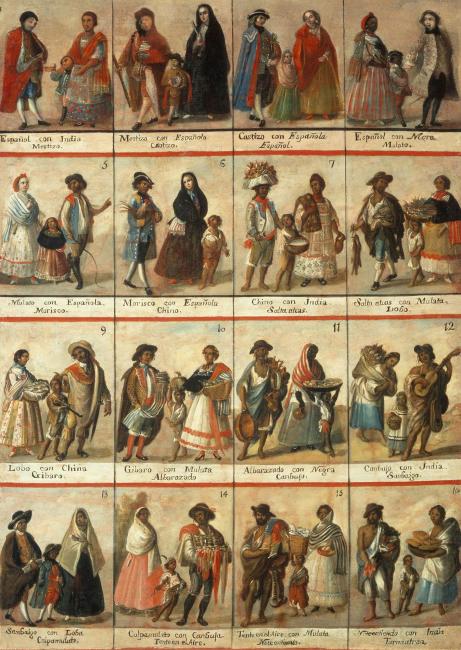The society born from the conquest and colonization will necessarily be complex and diverse in its social structures. Diverse because its articulation will be very different in those areas where indigenous communities will quickly become extinct or seriously depleted, quickly opening the way to mestizaje, or where they will continue to be the majority of the population. It is complex because in the new order there will be alternating criteria of social organization typical of Castilian estamental society and other characteristics of caste society. These criteria will also be transformed chronologically and spatially into these plural realities.
Pigmentocracy increased as the bands of biological and social mixing widened in the 17th and 18th centuries, and castes tended to be organized according to these hierarchical criteria of an ethnic nature. From the pure mixture between whites and Indians (the mestizo), or between whites and blacks (the mulatto), or between Indians and blacks (the zambo), a multitude of crosses is derived between all these elements, from which a society of much more complex castes derived, whose hierarchical criteria will be very diverse according to the regions.


